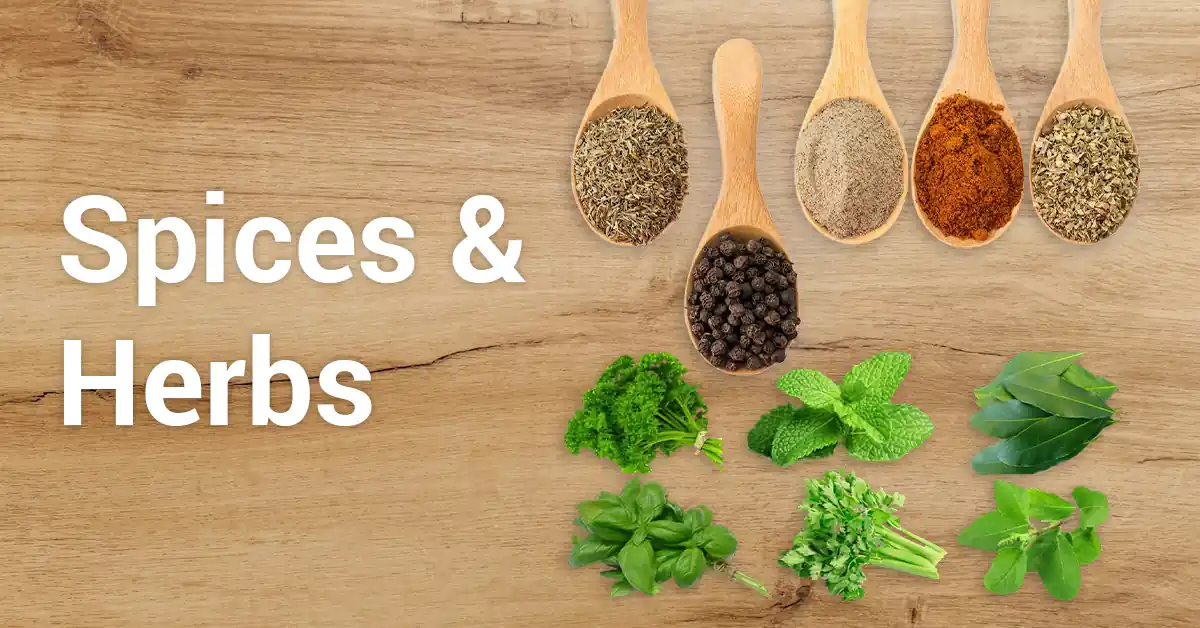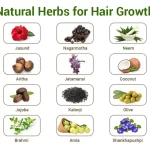Spices and herbs have been an integral part of human culture for centuries, enhancing the flavors of food, adding depth to culinary experiences, and even offering a wide array of health benefits. From anti-inflammatory properties to aromatic essences, these natural wonders have a lot to offer. In this comprehensive guide, we will delve into the fascinating realm of spices and herbs, exploring their diverse types, health benefits, and culinary applications. Whether you’re a seasoned chef or an enthusiastic home cook, this article is your go-to resource for all things spices and herbs. (McKee, L.H., 1995)
Types Of Spices And Herbs
The world of spices and herbs is incredibly diverse, encompassing a vast array of flavors, aromas, and textures. We ought to research unquestionably the most typical sorts: (Yano, Y., Satomi, M. and Oikawa, H., 2006)
- Anti-Inflammatory Spices and Herbs: Certain spices and herbs have been recognized for their potent anti-inflammatory properties. Turmeric, for instance, contains curcumin, a compound known for its anti-inflammatory and antioxidant effects. Other notable examples include ginger, cinnamon, and garlic.
- Common Spices and Herbs: Spices and herbs are found in every cuisine around the world. Some common ones include basil, thyme, oregano, rosemary, and coriander. These staples are used to elevate the taste of dishes and can be found in both dried and fresh forms.
- Asian Spices and Herbs: Asian cuisine is famous for its use of aromatic spices and herbs. Exotic flavors from ingredients like lemongrass, galangal, star anise, and fenugreek are key components of dishes across the continent.
- Healthy Spices and Herbs: Many spices and herbs offer health benefits beyond flavor enhancement. Cumin, for instance, may aid in digestion, while cilantro is believed to have detoxifying properties. These natural additives are a treasure trove of wellness.
- Organic Spices and Herbs: With the growing emphasis on organic and sustainable lifestyles, organic spices and herbs have gained popularity. Sourced from eco-friendly practices, these ingredients ensure a harmonious relationship between nature and your plate.
Health Benefits Of Spices And Herbs
The allure of spices and herb extends far beyond their culinary appeal. Here are some remarkable health benefits associated with their consumption:
- Anti-Inflammatory Properties: Many of these possess anti-inflammatory compounds that can help mitigate chronic inflammation, a common factor in various diseases.
- Digestive Aid: Certain spices like ginger and peppermint can aid digestion, reduce bloating, and alleviate gastrointestinal discomfort.
- Antioxidant Rich: Spices such as cloves, oregano, and turmeric are potent sources of antioxidants, which play a crucial role in neutralizing harmful free radicals.
- Metabolism Boosters: Ingredients like cayenne pepper and cinnamon have been linked to boosting metabolism, aiding weight management.
- Blood Sugar Regulation: Cinnamon and fenugreek have demonstrated potential in helping regulate blood sugar levels, making them beneficial for individuals with diabetes.
- Heart Health: Garlic, known for its heart-protective properties, may help lower blood pressure and reduce cholesterol levels.
- Cognitive Enhancement: Certain herbs like rosemary and sage have been associated with improved cognitive function and memory retention.
Culinary Applications Of Spices And Herbs
Beyond their health benefits, spices and herbs play an essential role in transforming ordinary dishes into extraordinary culinary creations. Here are some ways they are used in the kitchen: (Dini, I., 2018.)
- Flavor Enhancement: Spices and herbs are the backbone of flavor in any dish. From adding depth to soups and stews to elevating the taste of sauces and marinades, their versatility knows no bounds.
- Aromatic Infusion: Fragrant herbs like basil, mint, and thyme can infuse a dish with enticing aromas, making each bite a sensory delight.
- Cultural Significance: Different cultures have unique spice blends that define their cuisines. Garam masala in Indian dishes, za’atar in Middle Eastern fare, and Chinese five-spice are just a few examples.
- Natural Preservatives: Historically, spices were used to preserve food before modern refrigeration. Their antimicrobial properties helped extend the shelf life of perishables.
- Garnishes and Visual Appeal: Fresh herbs like parsley, cilantro, and chives not only add a burst of color but also a refreshing flavor when used as garnishes.
Conclusion
The world of spices and herbs is a captivating realm that tantalizes the taste buds, enhances culinary experiences, and offers an array of health benefits. From anti-inflammatory wonders to aromatic treasures, these natural ingredients are a testament to the power of nature in both the kitchen and our well-being. Whether you’re exploring the depths of Asian cuisine or savoring the comforting warmth of a homemade soup, spices and herbs are the magic touch that elevates every dish to new heights. So, the next time you reach for that jar of fragrant spices or bundle of fresh herbs, remember the rich history, remarkable flavors, herbal medicine and endless possibilities they bring to your plate.
You can also read : The Most Pervasive Problems in How to Make Herbal Extracts:





